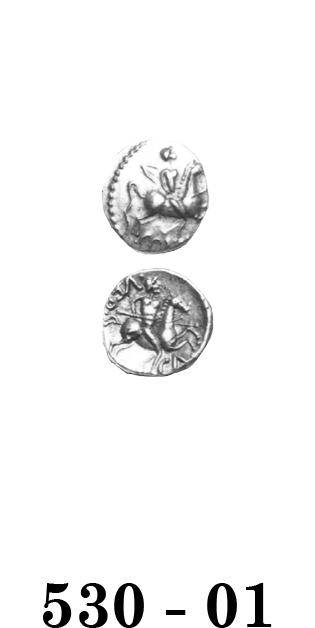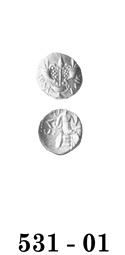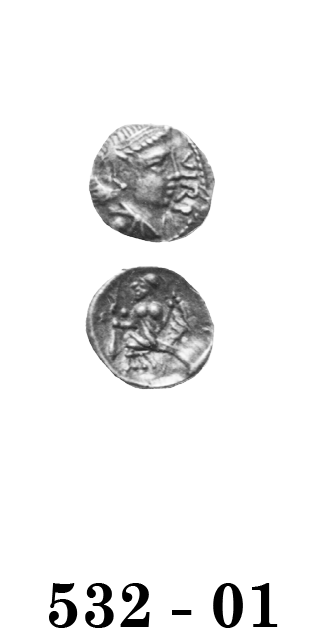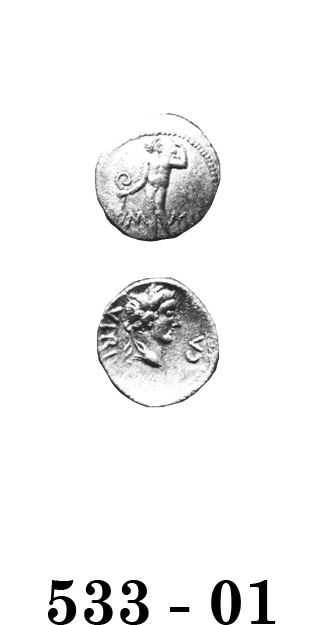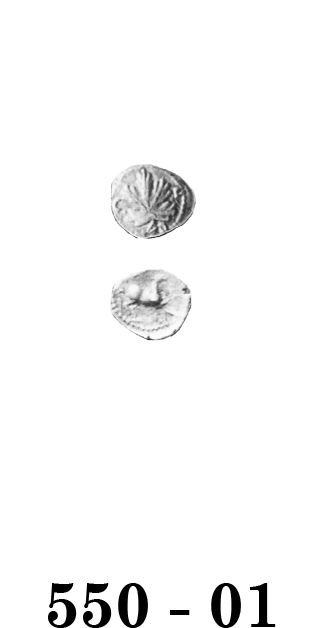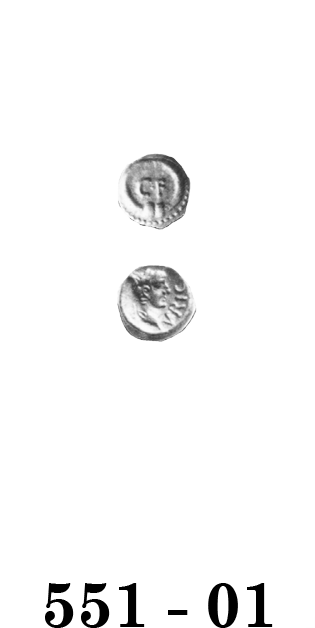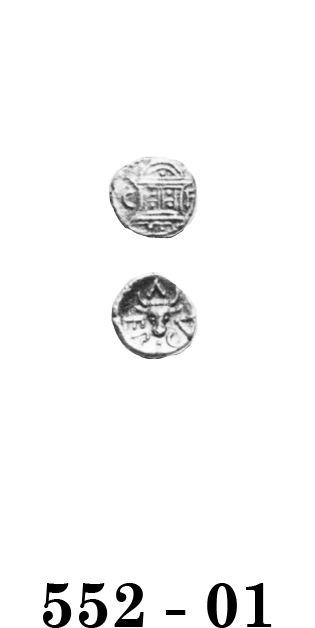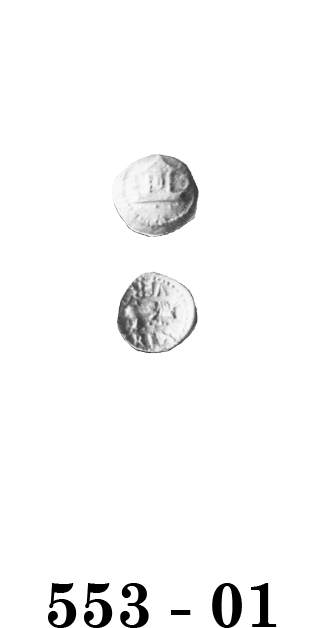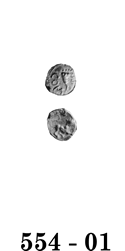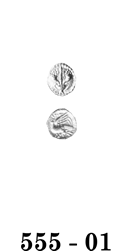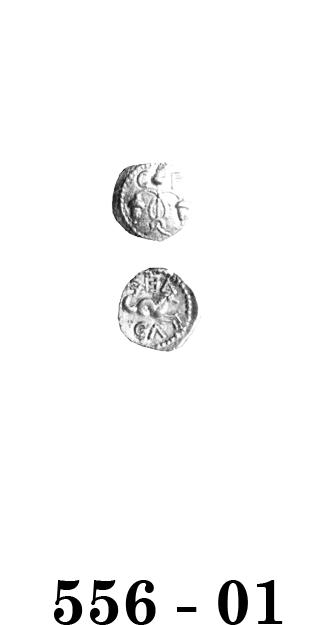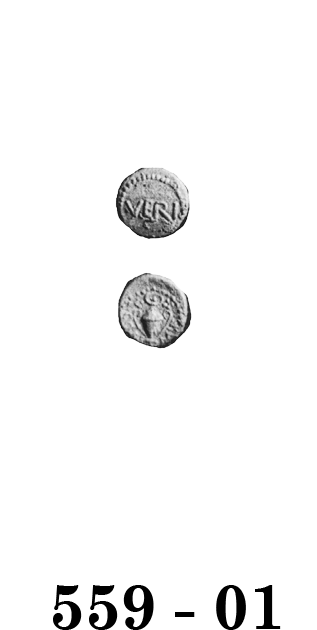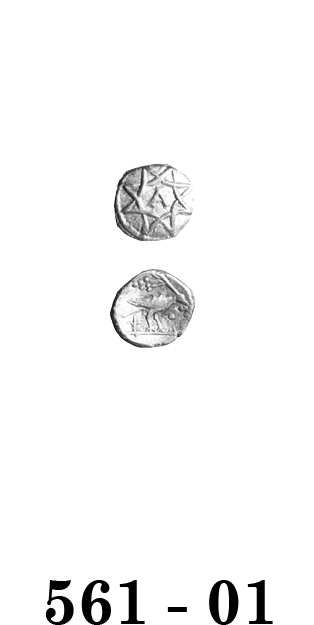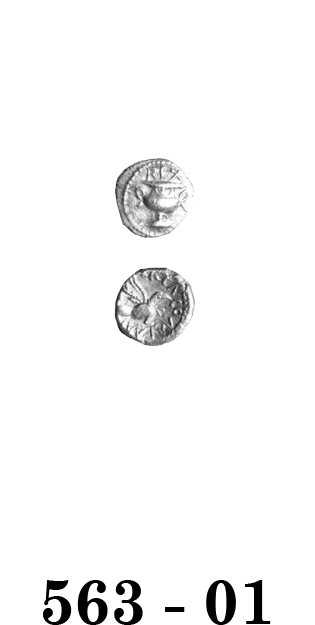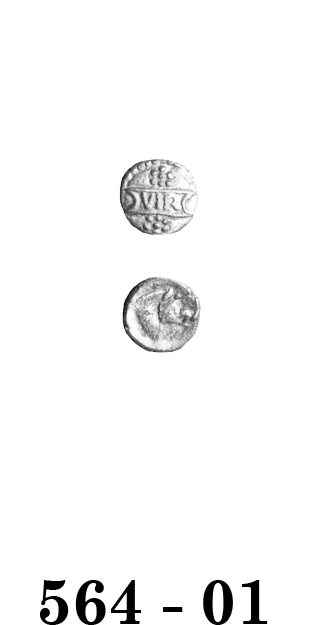
Celtic Coinage of Britain
third edition
Click on coin to see hidden information
The Coinage of Verica
Verica replaced Eppillus as leader of Atrebates around 10 A.D. Cunobeline, after his accession to the Trinovantian/Catuvellaunian leadership, had driven Eppillus and the Atrebates from Kent. Once Eppillus was deposed – he disappeared completely – peace was restored between the tribes.
Initially, Verica must have been accepted by his more powerful neighbour. By the mid 30's however, he evidently lost the support of Cunobeline. Coins began to appear in the northern part of Atrebatic territory carrying the name Epaticcus, who styled himself a son of Tasciovanus. This leader, a Trinovantian/Catuvellaunian sympathizer if not actually a relative of Cunobeline's, soon expanded his influence in Verica's territory. Verica was ultimately deposed by the encroacher and undoubtedly was the Berikos who fled to Rome on the eve of 43 A.D. Verica's appeal for Roman military intervention prompted the Claudian invasion the following year.
Verica struck three successive coinages, distinguished by the types of the staters. The First Coinage staters show a tablet with COMF on the obverse and a mounted warrior with the inscription VIR on the reverse. The Second Coinage staters are almost identical, but add the title REX to the reverse. The third coinage introduces a new design to the obverse, a vine leaf with VI RI on the sides. All three coinages include quarter staters, silver units and silver minims. No bronze coins have been identified and it is likely Verica struck only gold and silver.
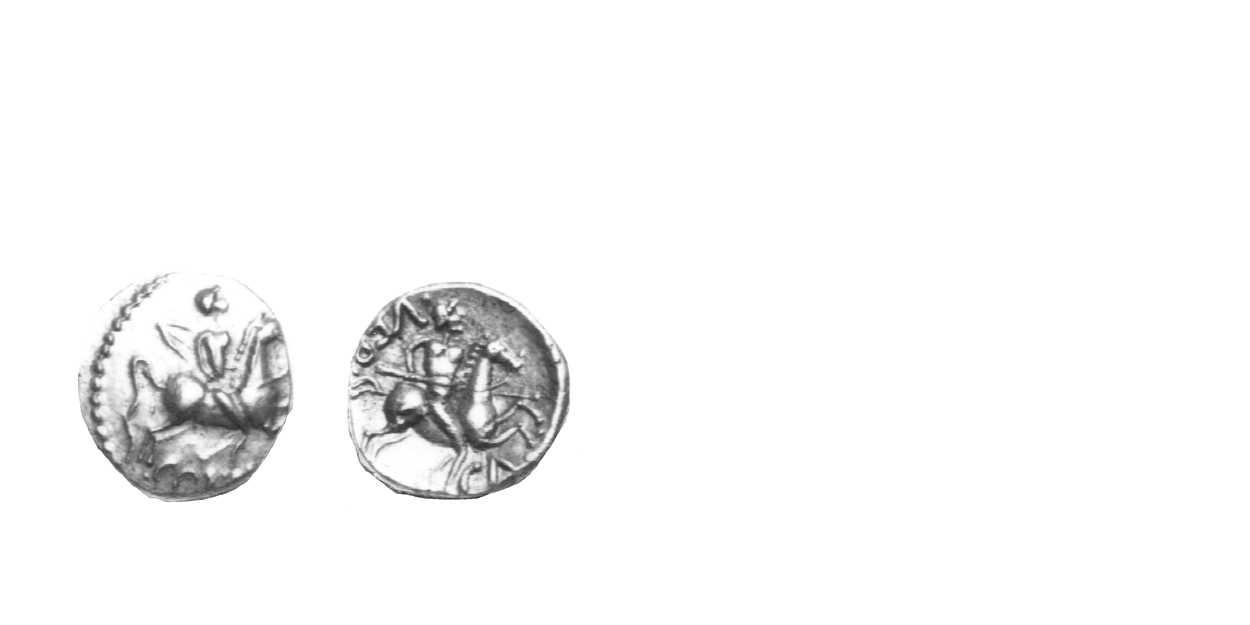
530 - 01 Verica Third Coinage
25-35 A.D. Scarce
Silver Unit 1.2 gms. 12 mm
Earliest Record: Evans, 1864
OBV: Celtic warrior on horse right
Identifying points:
1) warrior carries oval shield
2) COMMI F below horse
3) pellet border
REV: Celtic warrior on horse right
Identifying points:
1) warrior brandishes spear
2) VERI above horse
3) CA below horse
4) pellet border
CLASSlFICATlON: Atrebatic K
NOTES:
- Many found at Wanborough
- There is some question which is the obverse. Mack indicated the VERICA side. It appears the COMMI F occupies the convex side which is normally the obverse.
- Reverse copied from a Roman Republican denarius of Q. Pilipus
- Celtic Coin Index records indicate rarer than originally thought
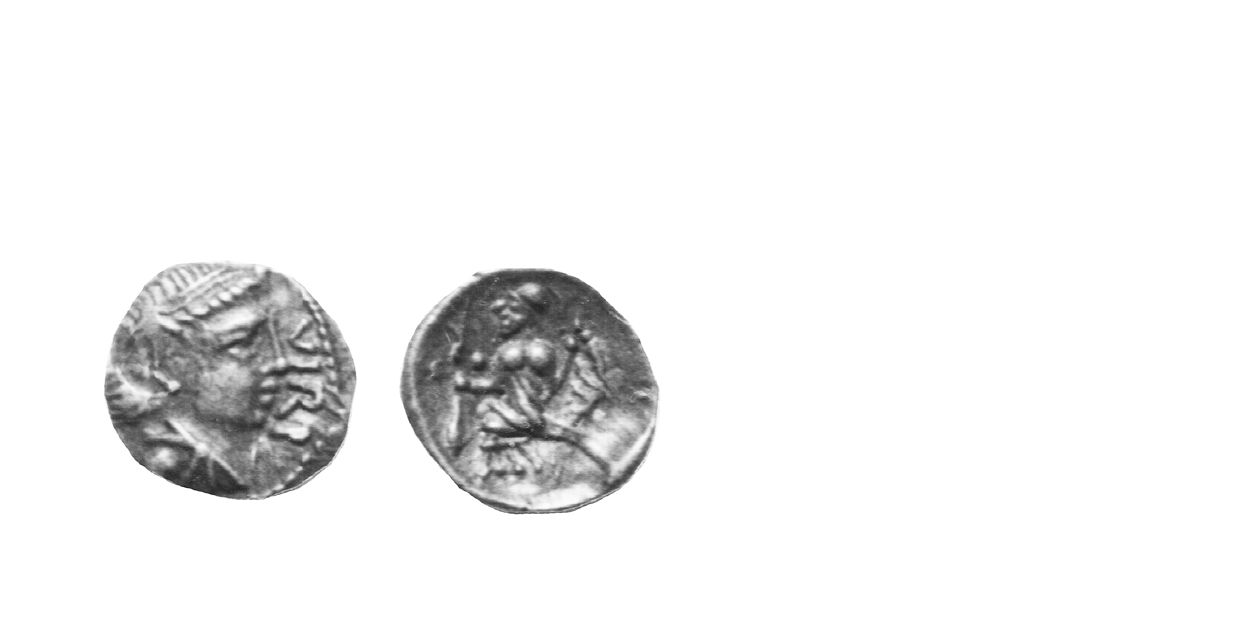
532 - 01 Verica Third Coinage
25-35 A.D. Extremely Rare
Silver Unit 13 mm
Earliest Record: Evans, 1864
OBV: Bust right
Identifying points:
1) bust draped and diademed
2) VIRI in front of face
3) pellet border
REV: Seated figure left
Identifying points:
1) figure wears helmet
2) figure holds branch in left hand, spear in right
3) pellet on either side of branch
CLASSIFICATION: Atrebatic K
NOTES:
- Some found at Wanborough
- Reverse copied from a coin of Tiberius
- Celtic Coin Index records indicate rarer than originally thought
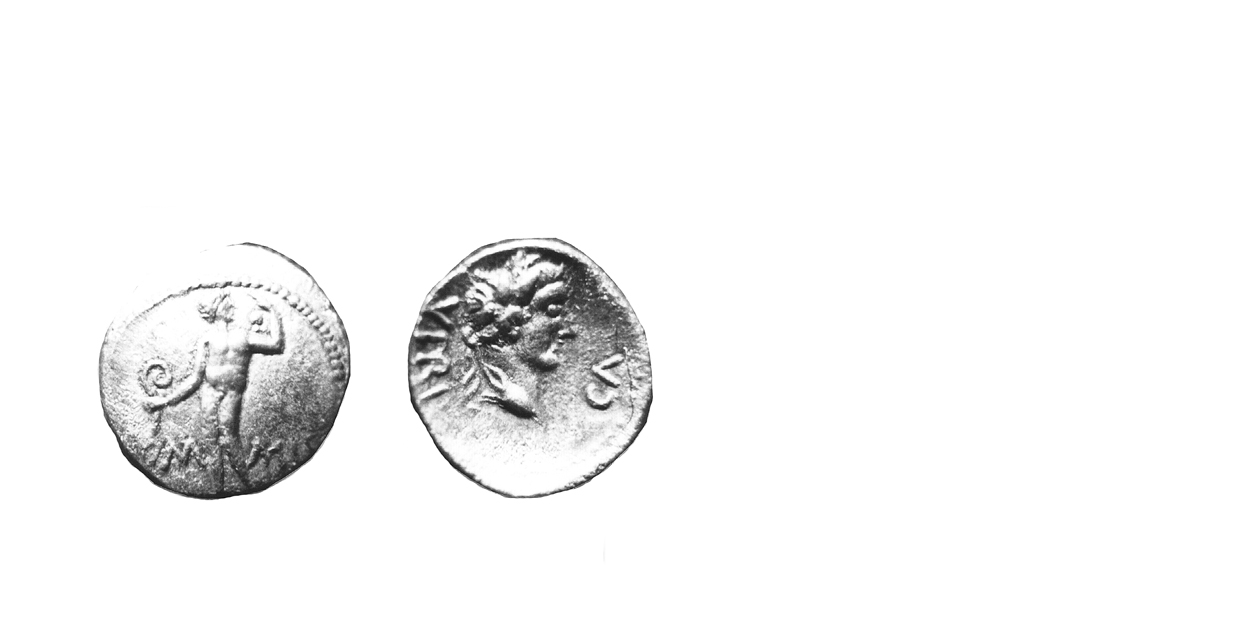
533 - 01 Verica Third Coinage
25-35 A.D. Scarce
Silver Unit 1.1 gms. 12 mm
Earliest Record: Mack, 1953
OBV: Male figure standing left
Identifying points:
1) figure, naked, holds left arm above head
2) figure holds lituus in right hand
3) COM to left of figure
4) Ml F to right of figure
5) pellet border
REV: Bust right
Identifying points:
1) bust of Tiberius, laureate
2) VERI behind bust
3) CA in front of face
4) pellet border
CLASSIFICATION: Atrebatic K
NOTES:
- Many found at Wanborough
- There is some question which is the obverse. Mack indicated the bust side. It appears the bust occupies the concave side which is normally the reverse.
- Reverse (bust side) copied from a coin of Tiberius
- Celtic Coin Index records indicate rarer than originally thought
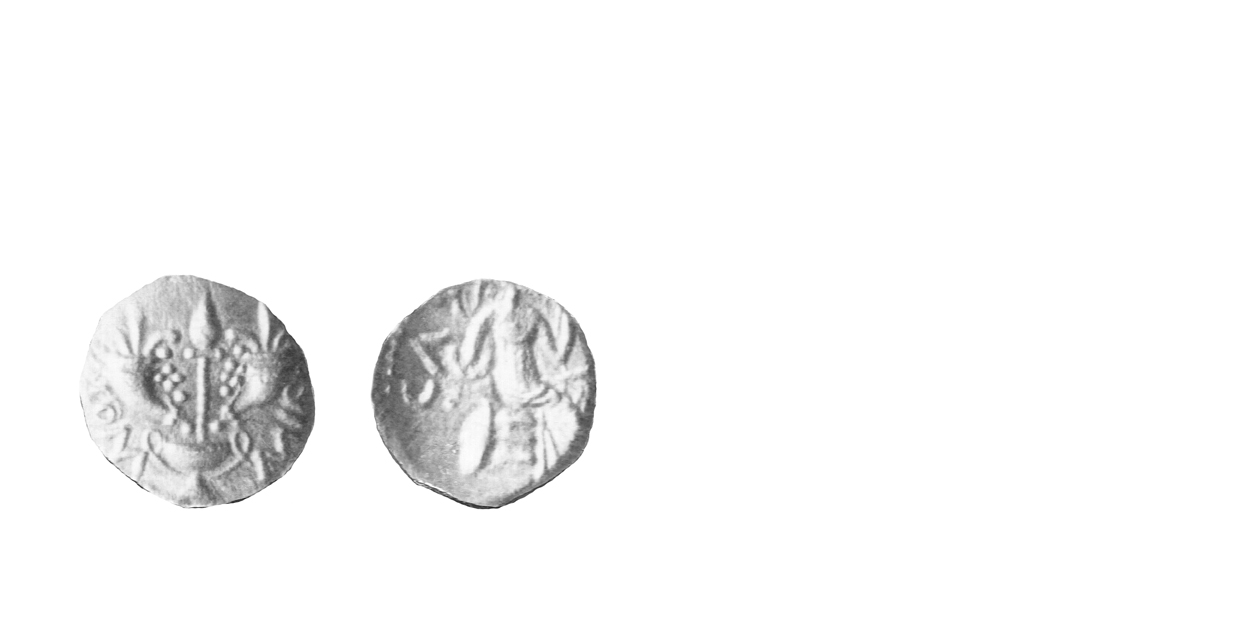
531 - 01 Verica Third Coinage
25-35 A.D. Scarce
Silver Unit 1.1 gms. 11 mm
Earliest Record: Poste, 1853
OBV: Two cornucopiae
Identifying points:
1) sceptre between cornucopiae
2) vase below sceptre
3) COMMI F around cornucopiae
REV: Seated figure right
Identifying points:
1) VERI in front of figur
2) CA behind figure
3) figure holds spear
4) oval shield behind figure
5) pellet border
CLASSIFICATION: Atrebatic K
NOTES:
- Many found at Wanborough
- There is some question which is the obverse. Mack indicated the seated figure side. It appears the cornucopia side occupies the convex side which is normally the obverse.
- Mack noted obverse (cornucopia side) was copied from a denarius of Mark Anthony
- Celtic Coin Index records indicate rarer than originally thought
534 - 01 Verica Third Coinage
25-35 A.D. Extremely Rare
Silver Unit
Earliest Record: Mack, 1964 (Godalming, Surrey find, ca. 1936)
OBV: Head right
Identifying points:
1) head "Augustan" according to Mack
2) VERICA in field
REV: Eagle left
Identifying points:
1) COMMI F in field
CLASSIFICATlON: Atrebatic K
NOTES:
- Photograph, metrological data not available
- Coin reportedly seen at Baldwin's in 1936
- Reportedly a Goldalming, Surrey find ca. 1936
- Not reported in Surrey Archaeological Collections 1931-1941
- The rarity estimate provided via trade survey in the 1980's of "Very Rare" is obviously incorrect – only one coin was ever recorded, and cannot be traced today.
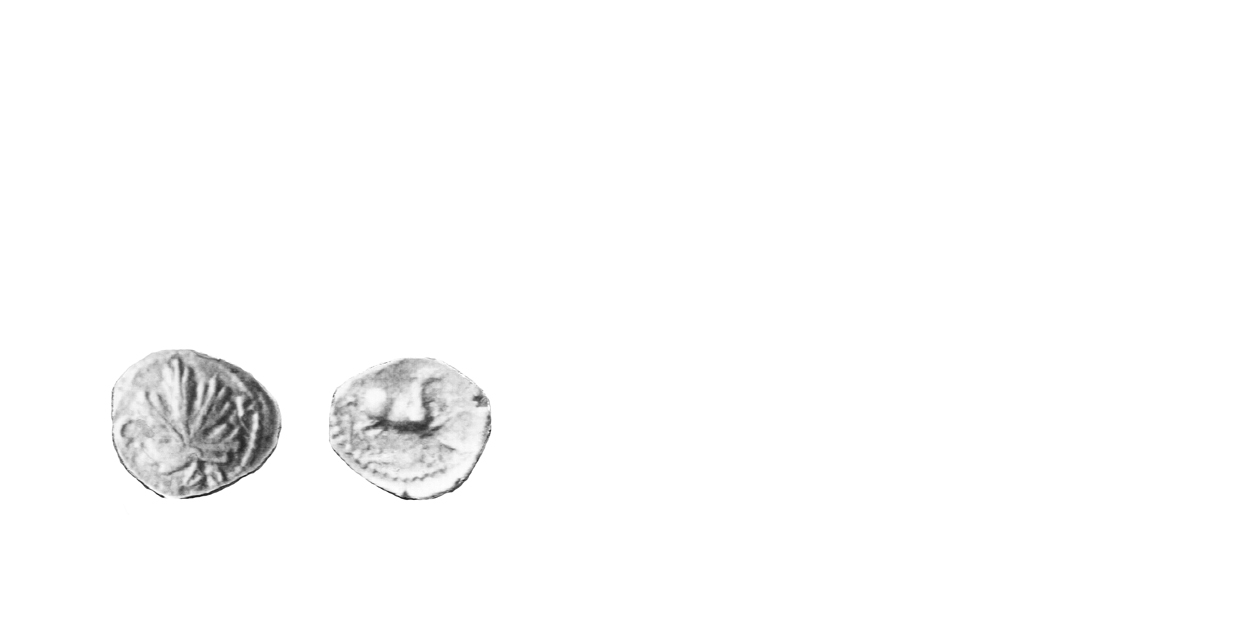
550 - 01 Verica Third Coinage
25-35 A.D. Very Rare
Silver Minim 0.3 gms. 8 mm
Earliest Record: Van Arsdell, 1989
OBV: Vine leaf
Identifying points:
1) C to left of leaf
2) F to right of leaf
3) pellet border
REV: Celticized horse right
Identifying points:
1) horse rears on hind legs
2) VERT above horse
3) CA below horse
4) pellet border
CLASSIFICATION: Atrebatic K
NOTES:
- Some found at Wanborough
- Not yet authenticated via metallurgical analysis, the type appears genuine, however
- This is the minim corresponding to 520 - 01 and 525 - 01
- Celtic Coin Index records indicate rarer than originally thought
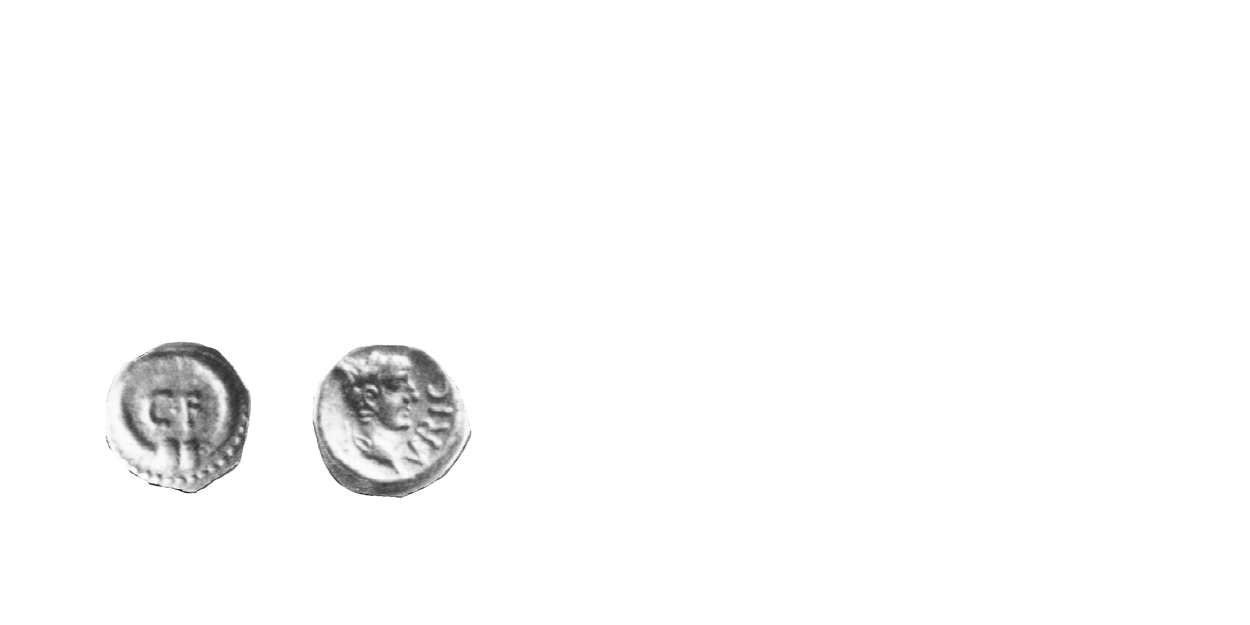
551 - 01 Verica Third Coinage
25-35 A.D. Very Rare
Silver Minim 0.2 gms. 8 mm
Earliest Record: Mack, 1953
OBV: Torc
Identifying points:
1) C.F inside torc
2) torc has pellet terminals
REV: Bust right
Identifying points:
1) VERI in front of face
CLASSIFICATION: Atrebatic K
NOTES:
- Some found at Wanborough
- There is some question which side is the obverse. Mack indicated the bust side. This side is concave, however, and would normally be the reverse.
- Reverse (bust side) copied from a denarius of Tiberius
- Celtic Coin Index records indicate rarer than originally thought
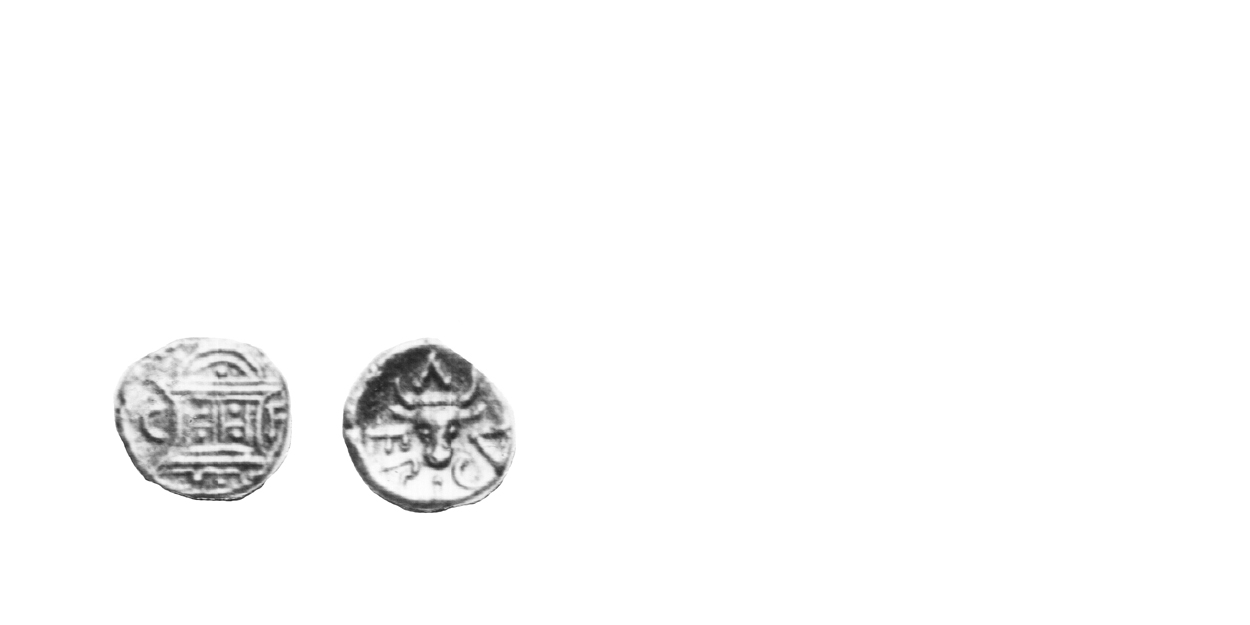
552 - 01 Verica Third Coinage
25-35 A.D. Extremely Rare
Silver Minim 9 mm
Earliest Record: Mack, 1975
OBV: Altar
Identifying points:
1) altar made up of lines and pellets, top is curved
2) C to left of altar
3) F to right of altar
4) pellet border
REV: Facing bull's head
Identifying points:
1) V, up-side down above head
2) ERICA below head
CLASSIFICATION: Atrebatic K
NOTES:
- Most in museums
- Not yet authenticated via metallurgical analysis, the type appears genuine, however
- Reports of many finds from Wanborough, but cannot be confirmed
- Celtic Coin Index records indicate rarer than originally thought
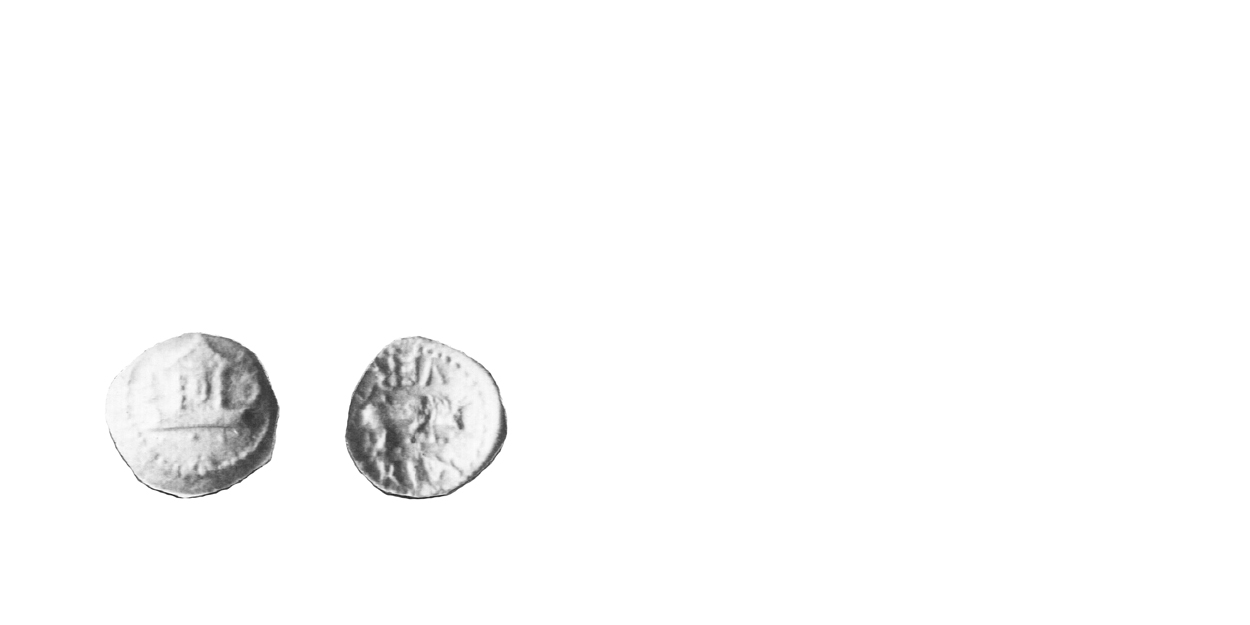
553 - 01 Verica Third Coinage
25-35 A.D. Very Rare
Silver Minim 0.3 gms. 8 mm
Earliest Record: Van Arsdell, 1989
OBV: Temple
Identifying points:
1) temple with peaked roof
2) C and F, upside-down on sides
3) indistinct figure in temple appears to hold spear
4) pellet border
REV: Bull right
Identifying points:
1) bull butting right
2) VER upside-down above bull
3) REX below bull
4) pellet border
5) exergual line below bull
CLASSIFICATION: Atrebatic K
NOTES:
- Some found at Wanborough
- Later version of 552 - 01
- Not yet authenticated via metallurgical analysis, the type appears genuine, however
- Obverse adapted from denarius of Augustus with temple of Jupiter Tonans, B.M .C. 4415
- Reverse adapted from a denarius of Augustus
- The suggestion a Celtic temple is depicted is unlikely
- Celtic Coin Index records indicate rarer than originally thought

554 - 01 Verica Third Coinage
25-35 A.D. Extremely Rare
Silver Minim 0.3 gms. 7 mm
Earliest Record: Van Arsdell
OBV: Cornucopia
Identifying points:
1) three pellets at open end of cornucopia
2) COM to left of cornucopia
3) probably MI F to right of cornucopia, but partially off-flan on only published example
4) pellet border
REV: Celticized lion right
Identifying points:
1) lion has reversed-S tail
2) pellet border
CLASSIFICATION: Atrebatic K
NOTES:
- Some found at Wanborough
- Not yet authenticated via metallurgical analysis, the type appears genuine, however
- Celtic Coin Index records indicate rarer than originally thought
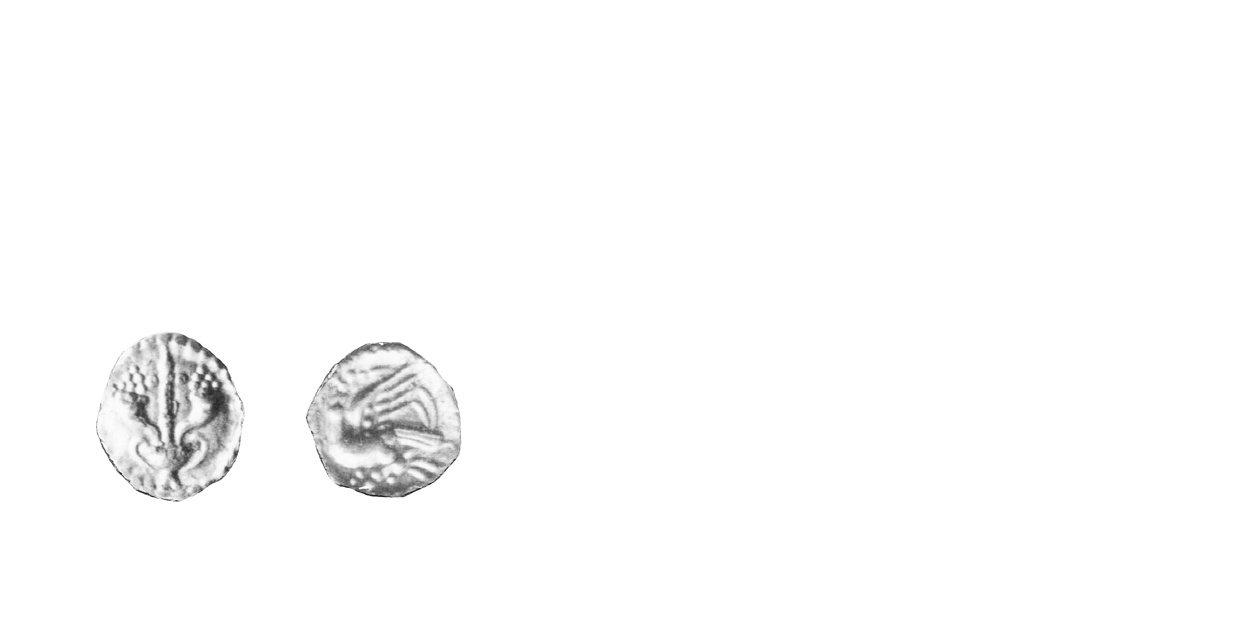
555 - 01 Verica Third Coinage
25-35 A.D. Rare
Silver Minim 0.2 gms. 8 mm
Earliest Record: Van Arsdell,1989
OBV: Two cornucopiae
Identifying points:
1) similar to 531 - 01
2) standard between two cornucopiae
3) pellet border
REV: Eagle flying left
Identifying points:
1) eagle's head turned back to right
2) pellet border
CLASSIFICATION: Atrebatic K
NOTES:
- Some found at Wanborough
- Not yet authenticated via metallurgical analysis, the type appears genuine, however
- Obverse copied from a coin of Mark Anthony
- This is the minim corresponding to 531 - 01
- Celtic Coin Index records indicate rarer than originally thought
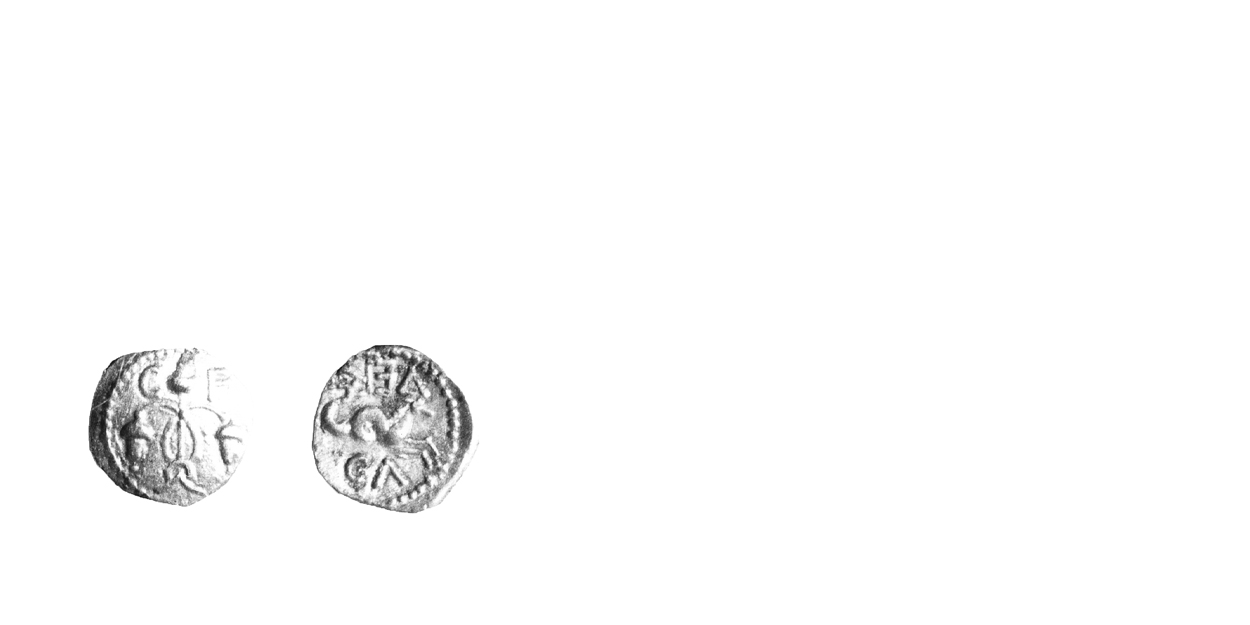
556 - 01 Verica Third Coinage
25-35 A.D. Extremely Rare
Silver Minim 0.3 gms. 9 mm
Earliest Record: Van Arsdell, 1989
OBV: Floral pattern
Identifying points:
1) two leaved, or flowered plant
2) C F above plant
3) pellet border
REV: Hippocamp right
Identifying points:
1) VER, up-side-down, above hippocamp
2) CA below hippocamp, no crossbar to A
3) I in VERICA does not appear
4) pellet border
CLASSIFICATION: Atrebatic K
NOTES:
- Some found at Wanborough
- Not yet authenticated via metallurgical analysis, the type appears genuine, however
- Celtic Coin Index records indicate rarer than originally thought
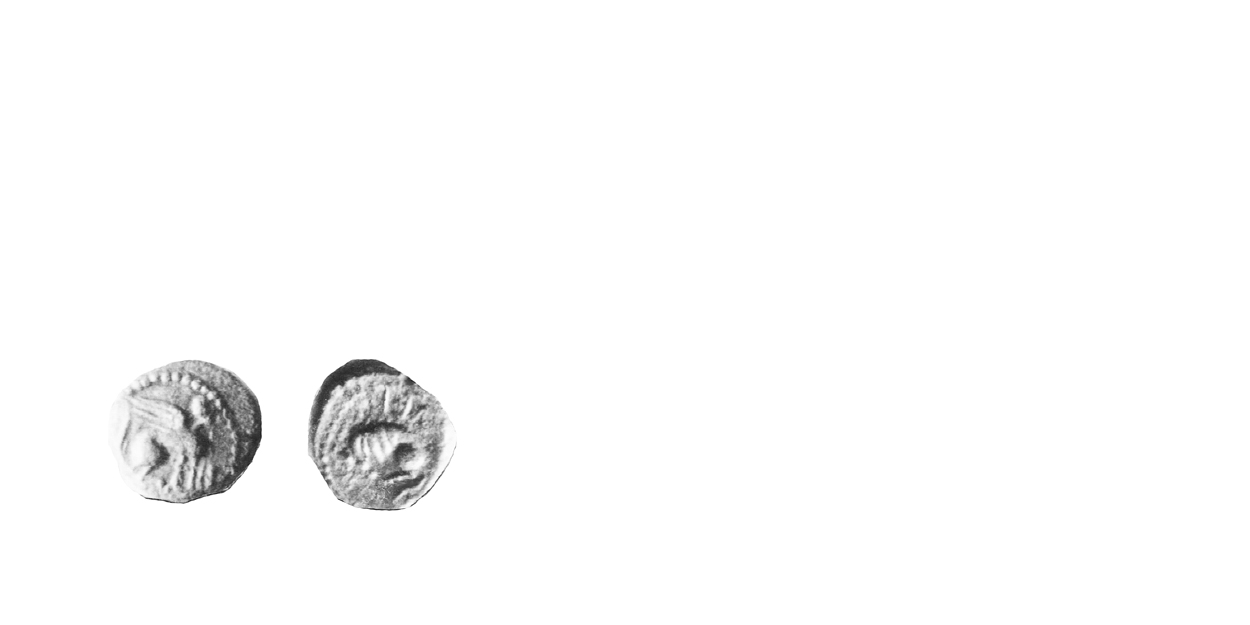
557 - 01 Verica Third Coinage
25-35 A.D. Very Rare
Silver Minim
Earliest Record: Van Arsdell, 1989
OBV: Sphinx right
Identifying points:
1) sphinx crouches
2) C below sphinx
3) F in front of sphinx
4) exergual line below sphinx
5) pellet border
REV: Animal, curled up right
Identifying points:
1) VERI inverted above animal
2) animal appears to be a hound sleeping
CLASSIFICATION: Atrebatic K
NOTES:
- Some found at Wanborough
- Metrological data not available
- Not yet authenticated via metallurgical analysis, the type appears genuine, however
- Celtic Coin Index records indicate rarer than originally thought
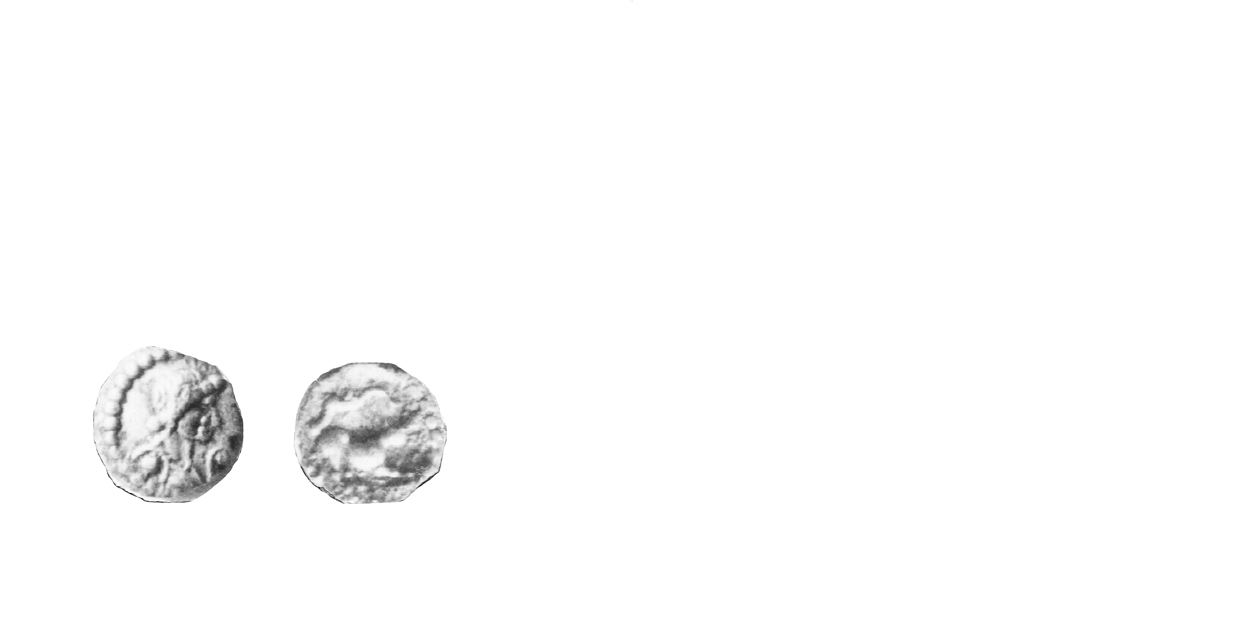
558 - 01 Verica Third Coinage
25-35 A.D. Extremely Rare
Silver Minim 0.2 gms. 8 mm
Earliest Record: Van Arsdell, 1989
OBV: Bust right
Identifying points:
1) bust laureate
2) pellet-in-ring motif in front of bust
3) pellet border
REV: Celtized dog right
Identifying points:
1) dog very stylized
2) exergual line below
3) pellet-in-ring motif above dog
CLASSIFICATION: Atrebatic K
NOTES:
- Some found at Wanborough
- Not yet authenticated via metallurgical analysis, the type appears genuine, however
- Bust undoubtedly derived from a Roman denarius
- Celtic Coin Index records indicate rarer than originally thought
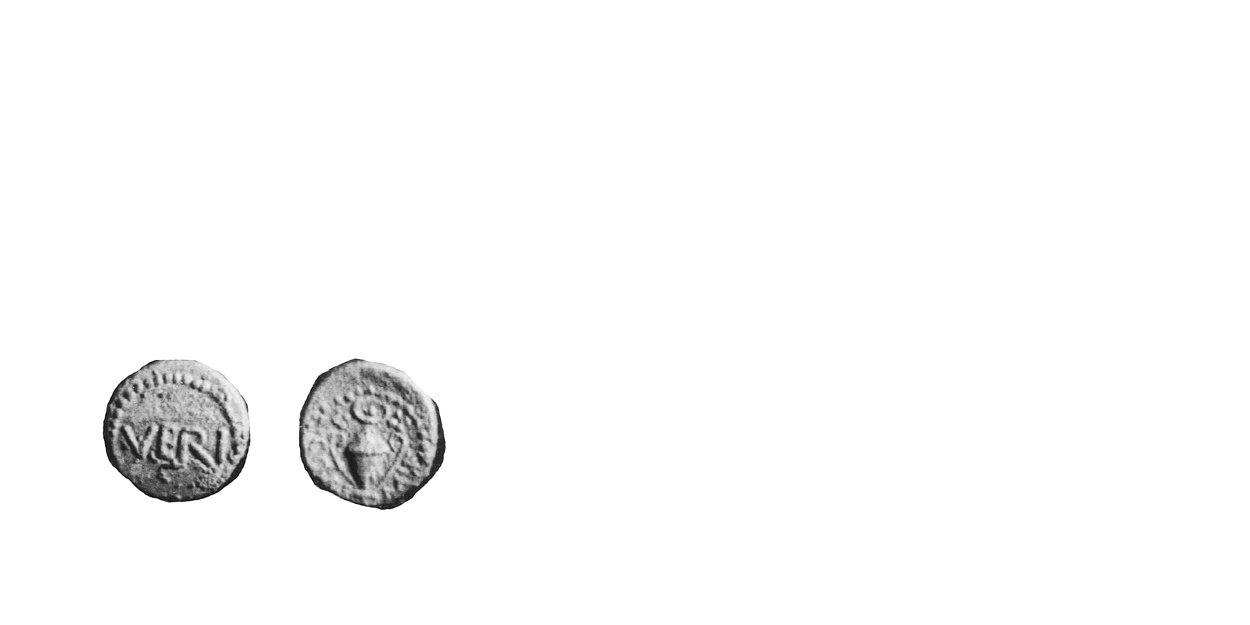
559 - 01 Verica Third Coinage
25-35 A.D. Extremely Rare
Silver Minim 6 mm
Earliest Record: Van Arsdell, 1989
OBV: Inscription in plain field
Identifying points:
1) VERI in centre
2) pellet border
REV: Urn
Identifying points:
1) urn has two handles
2) pellet-in-oval motif for lid
3) COM to left of urn
4) Ml F to right of urn
5) pellet border
CLASSIFICATION: Atrebatic K
NOTES:
- Some found at Wanborough
- Not yet authenticated via metallurgical analysis, the type appears genuine, however
- Celtic Coin Index records indicate rarer than originally thought
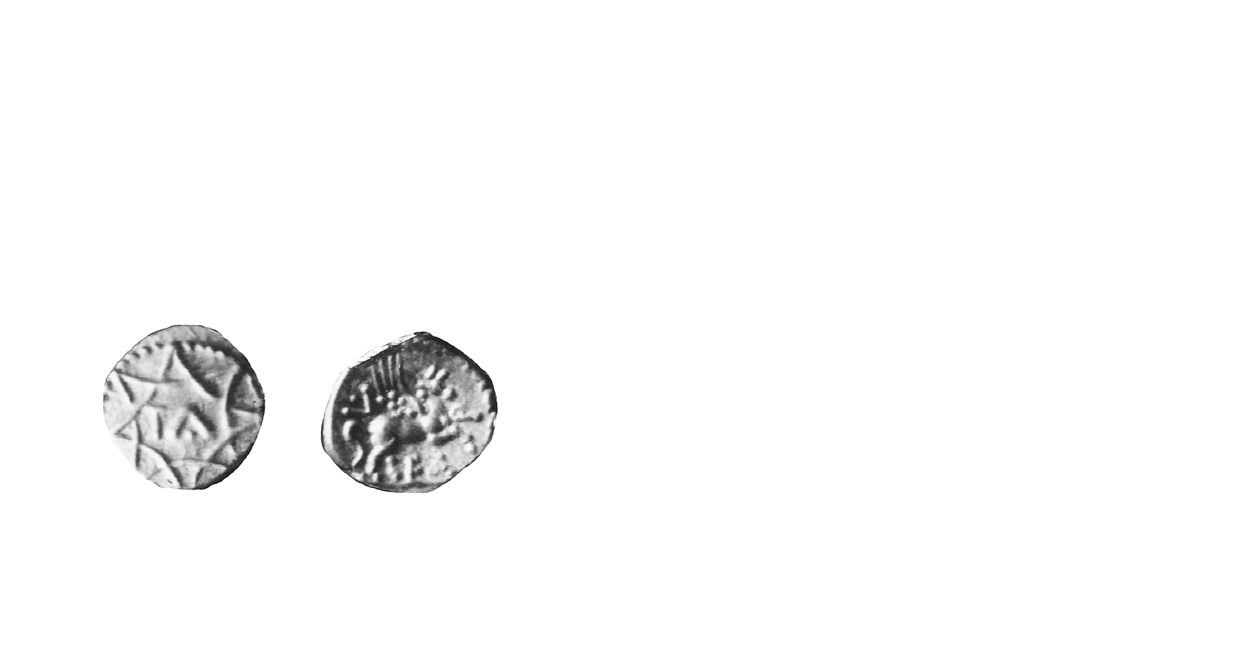
560 - 01 Verica Third Coinage
25-35 A.D. Very Rare
Silver Minim 0.3 gms. 8 mm
Earliest Record: Van Arsdell, 1989
OBV: Geometric pattern
Identifying points:
1) two squares form eight-pointed star
2) Vl in centre, or possibly TA
3) pellet in arms of V
4) pellet border
REV: Pegasus right
Identifying points:
1) Pegasus prancing
2) exergual line below
3) V above Pegasus, REX, almost illegible, below
4) pellet border
CLASSIFICATlON: Atrebatic K
NOTES:
- Some found at Wanborough
- Not yet authenticated via metallurgical analysis, the type appears genuine, however
- Celtic Coin Index records indicate rarer than originally thought
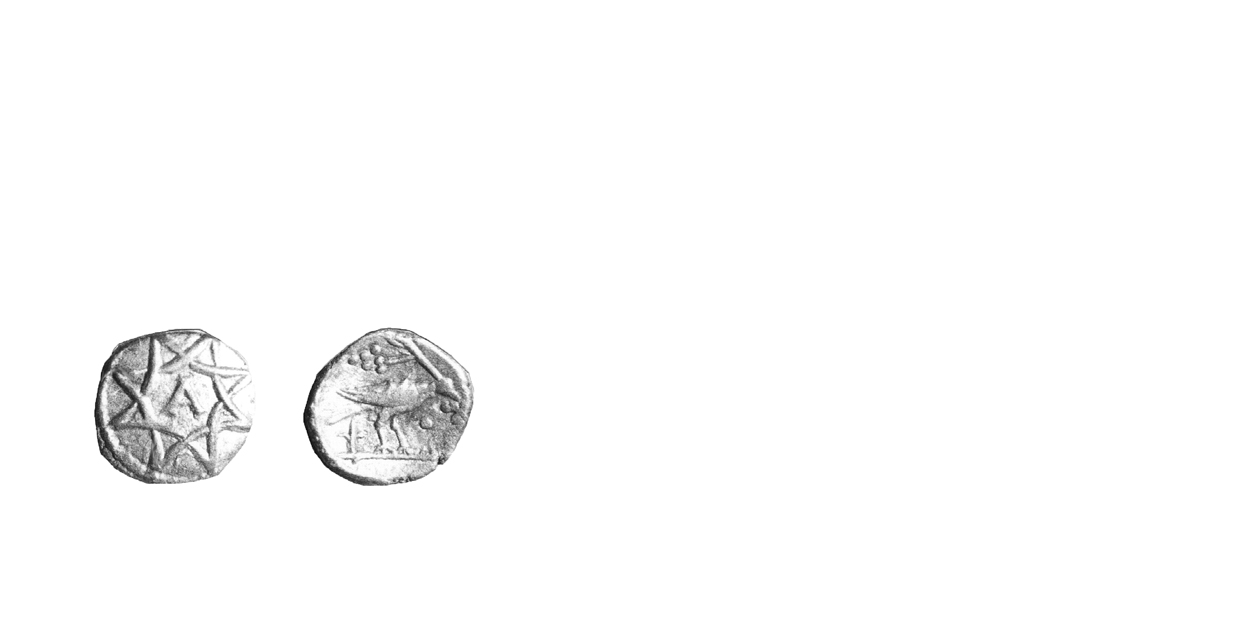
561 - 01 Verica Third Coinage
25-35 A.D. Extremely Rare
Silver Minim 0.2 gms. 9 mm
Earliest Record: Mack, 1953
OBV: Geometric pattern
Identifying points:
1) as 560 - 01
2) A in centre
REV: Bird right
Identifying points:
1) bird stands on branch
2) pellet border
CLASSIFICATION: Atrebatic K
NOTES:
- Some found at Wanborough
- Reverse possibly adapted from an intaglio, a pre-Flavian plasma intaglio from Fishbourne is similar
- Attributed to Amminius when published in 1953
- Celtic Coin Index records indicate rarer than originally thought
562 - 01 Verica Third Coinage
25-35 A.D. Extremely Rare
Silver Minim
Earliest Record: Van Arsdell, 1989
OBV: Geometric pattern
Identifying points:
1) as 560 - 01
2) B in centre
REV: Bird right
Identifying points:
1) as 561 - 01
CLASSIFICATION: Atrebatic K
NOTES:
- Some found at Wanborough
- Traditionally attributed to Amminius, but now reassigned to Verica
- The type is the successor to 560 - 01 and 561 -01
- Metrological data not available
- Not yet authenticated via metallurgical analysis, the type appears genuine, however
- May share reverse die with 561 - 01
- Reverse possibly adapted from an intaglio, a pre-Flavian plasma intaglio from Fishbourne is similar
- Not illustrated
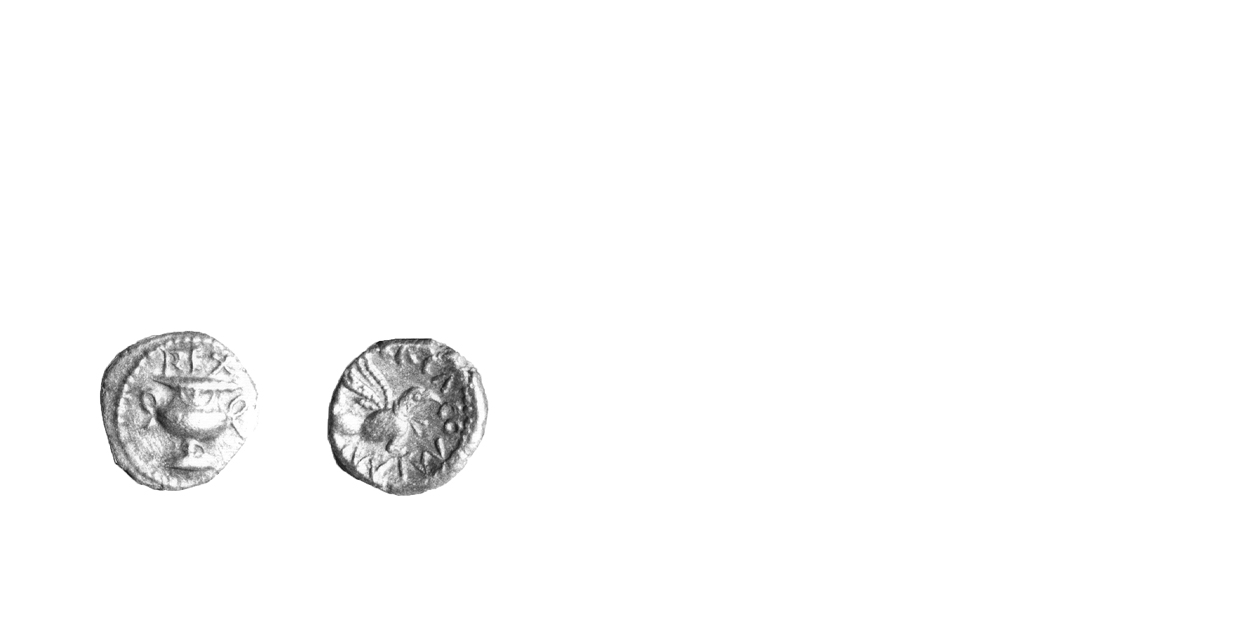
563 - 01 Verica Third Coinage
25-43 A.D. Very Rare
Silver Minim ca. 7-8 mm
Earliest Record: Van Arsdell, 1989
OBV: Urn
Identifying points:
1) urn has base and two handles
2) REX above
3) pellet border
REV: Eagle flying right
Identifying points:
1) eagle wears 'necktie'
2) VERICA COMMI F around eagle
3) pellet border
CLASSIFICATION: Atrebatic K
NOTES:
- Some found at Wanborough.
- Original suggestion that the was coin commoner than thought has been confirmed by Celtic Coin Index records
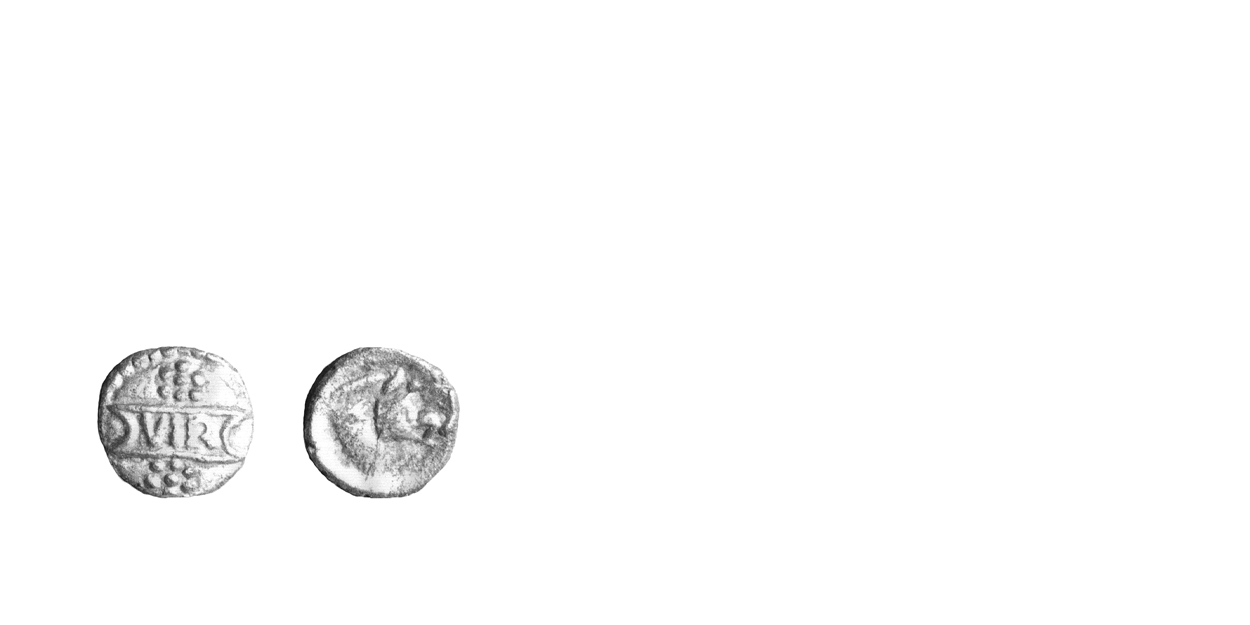
564 - 01 Verica Third Coinage
25-43 A.D. Very Rare
Silver Minim ca. 7-8 mm
Earliest Record: Evans, 1964
OBV: Inscription in tablet
Identifying points:
1) VIR in concave-sided box
2) daisy above and below box
3) pellet border
REV: Boar's head right
Identifying points:
1) boar's head in plain field
CLASSIFICATION: Atrebatic K
NOTES:
- Coin was published by Evans in 1864, but the illustration has an uncertain object on the reverse
- Evans could not identify the object
- Mack appears correct in equating Evans' coin with this type
Coinage of the Atrebates, Regni & Belgae
The Atrebates, Regni and Belgae occupied the territory that is today Berkshire, Sussex and Hampshire. Whether three distinct political groups struck coins cannot be proven today, nor can separate territories be demonstrated. The Regni are virtually unknown to history until the Roman period, and the tribal area of the Belgae is a matter of controversy. Though Belgic immigration is mentioned by Caesar, he does not specifically say where they settled, and we only have the Roman name Venta Belgarum to suggest a location. The Atrebates, also mentioned by Caesar, had tribal members on both sides of the Channel.
Traditionally, the three tribes have been treated numismatically as one. Based on the current state of research, there is no reason to change this approach. Attempts have been made to identify a separate coinage for the Belgae. These have been largely, but not entirely, based on reports of new types of silver coins published in numismatic trade lists since 1994. The coins do not appear to form a coherent issue of a single issuing authority and questions exist regarding their precise status. These enigmatic coins demand careful analysis and reflection before they are accepted as evidence for a Belgic coinage. Certainly, after the Gallic War, only one coinage circulated in the territory. It may someday come to pass that coinages for the Belgae and Regni can be identified, but only after a rigorous analysis of the new types has been completed. Most of these are listed under "New Material". For the remainder of this discussion the three tribes will be referred to simply as the "Atrebates" for the sake of brevity.
Initially, the three tribes constituted one of the most advanced groups in Britain. They had trading contacts with Belgic Gaul in the late second and early first centuries B.C., and were one of the earliest to strike coins. The earliest stater, the INSULAR TYPE struck before the Gallic War, is derived from imported Gallo-Belgic C. The next coinage, the WESTERHAM TYPE, is now felt to be inspired by the Trinovantian/Catuvellaunian coinage of the same name, struck during the Gallic War. After the war, the tribal position changed dramatically, and the Atrebates may have fallen out of favour with the Romans. It is possible the cross-Channel trading rights were given to the Trinovantes/Catuvellauni instead. A loss of trading rights may have been the result of Commius' activities during the War.
Commius, at first a supporter of Caesar, became disillusioned with the Romans and went over to Vercingetorix. After the collapse of Celtic resistance at Alesia, he fled to join the British part of his tribe. Later, the Atrebates struck coins with his name, and possibly the acceptance of Commius in Britain was the reason they fell out of favour. The change in trading rights altered the relative fortunes of the two tribes forever. By the end of the millennium, the Trinovantes/Catuvellauni had economic influence throughout southern Britain and had begun to rival the Atrebates.
The Atrebates seized the opportunity of the Trinovantian/Catuvellaunian Interregnum to mount a military incursion into Kent under their leader, Eppillus. Eppillus struck a victory stater commemorating the initial success of the expedition. The incursion was cut short, however, by the elevation of Cunobeline to the Trinovantian/Catuvellaunian throne. He drove the Atrebates out of Kent and Eppillus promptly disappeared. He is replaced on the coins by Verica, a self-styled 'son of Commius'.
Sometime before the Claudian invasion, Verica was in turn overthrown. He probably was the historical Celtic leader 'Bericus' who appeared in Rome seeking aid from Claudius. Verica was replaced on the coins by Epaticcus, who styled himself a 'son of Tasciovanus'. Whether the family-tie was real is not so important, the result was the Atrebatic leadership was now held by a Trinovantian/Catuvellaunian sympathizer. Shortly before the Claudian invasion, Epaticcus was replaced by Caratacus, the famous leader of the British resistance against the Roman invaders. The Atrebatic coinage came to an end during the forties, as Caratacus fled westwards to lead the resistance amongst the tribes in Wales. One Atrebatic leader known to history, Cogidubnus, has not yet been identified on the coinage. It seems he was not elevated to leadership until the coinage had come to an end.
The oppidum of Calleva, Silchester today, was the site of an Atrebatic mint, and the name Calleva appears on coins of Eppillus. Other leaders may have had mints elsewhere, but none have been identified. Plausible mint sites for separate Belgic or Regnan coinages have not been identified.
